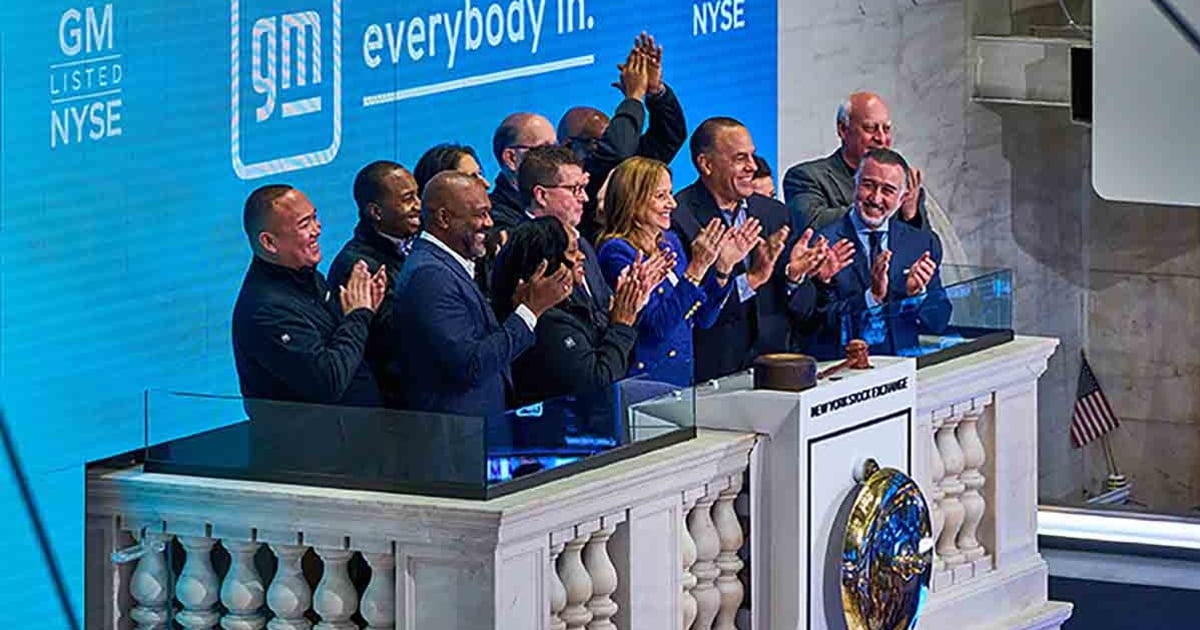
General Motors on Thursday said its electric vehicles would be “solidly profitable” by 2025, when it expects to be building 1 million of them a year in North America and 1.2 million battery cells daily in the U.S.
GM CFO Paul Jacobson told reporters ahead of the company’s investor day in New York that the automaker will maintain North American profit margins of 8 to 10 percent in the coming years and that EV margins will nearly match those of internal combustion vehicles with the benefit of additional scale and forthcoming federal tax credits.
The company is projecting low- to mid-single-digit margins on EVs in 2025, including emissions credits and software and aftersales revenue. GM expects to generate more than $50 billion in revenue from EVs and $225 billion in total revenue in 2025. Its global revenue last year was $127 billion.
“This is really just the start for us,” Jacobson said. “And when you think about the EV tax credits on top of it — we will talk about $3,500 to $5,500 per vehicle, or about 5 to 7 points of margin under the EV program, getting us to a position where we believe we’ll have ICE-like margins in the 2025 time period.”
GM has committed $35 billion toward electric and autonomous vehicle development through 2025 and aims to make its light-duty vehicle portfolio emissions-free in North America by 2035. The automaker is building four U.S. plants to produce its proprietary Ultium batteries in a joint venture with LG Energy Solution and has laid out plans to have five North American plants assembling EVs as of 2025.
“GM’s ability to grow EV sales is the payoff for many years of investment in R&D, design, engineering, manufacturing, our supply chain and a new EV customer experience that is designed to be the best in the industry,” GM CEO Mary Barra said in a statement Thursday. “Our multi-brand, multi-segment, multi-price point EV strategy gives us incredible leverage to grow revenue and market share, and we believe our Ultium platform and vertical integration will allow us to continuously improve battery performance and costs.”
Jacobson said GM’s annual capital spending through 2025 will range from $11 billion to $13 billion, a reflection of the automaker’s aggressive plans to increase EV production capacity, he said.
“We believe the EV market will be even bigger by 2025 than the 17 percent share of industry that a lot of third-party forecasters are predicting,” he told reporters. “And we’re going to do that with great design, quality, performance and more price points than anybody else can offer. And that’s really built upon the foundation of the flexibility of the Ultium program.”
GM said its U.S. battery cell capacity should top 160 gigawatt-hours by the middle of the decade. At the same time, its battery cell costs should decline from about $87 per kilowatt-hour in 2025 to less than $70 per kWh in the second half of this decade, Jacobson said.
The company projected that total revenue will increase 12 percent annually through 2025, with growth coming not only from EVs but also from software, its BrightDrop electric delivery van unit and Cruise, the self-driving vehicle company majority-owned by GM, Jacobson said.
GM said BrightDrop is on pace to have $1 billion in revenue next year, en route to as much as $10 billion in revenue and 20 percent profit margins by decade’s end. The automaker said BrightDrop has more than 25,000 reservations and letters of intent from customers including Walmart, Hertz and Verizon, and it will launch a subscription-based software platform in 2023 to give commercial customers more operational visibility through a user portal and mobile apps.
The automaker sells four EVs at U.S. dealerships today: the Cadillac Lyriq midsize crossover, the GMC Hummer EV pickup, the Chevrolet Bolt EV hatchback and the Bolt EUV compact crossover. Next year, it plans to launch electric versions of the Chevy Silverado, Equinox and Blazer; an SUV version of the Hummer; and a hand-built Cadillac electric sedan, the Celestiq. Buick, which plans to introduce its first U.S. EV in 2024, and Cadillac are expected to have fully electric lineups by the end of the decade.
GM opened its first Ultium battery plant, in Ohio, this year. A second plant, in Spring Hill, Tenn., is slated to open in 2023, followed by a third, near Lansing, Mich., by the end of 2024. Indiana appears to be the likely location for the fourth battery plant, but Jacobson declined to share details Thursday.
Barra told analysts last month that GM now expects to produce a total of 400,000 EVs in North America by mid-2024, rather than by the end of 2023 as the automaker outlined in February, citing a slower production launch at the Ohio Ultium plant. But Jacobson said the company remains on track to achieve its 1 million production goal in 2025.